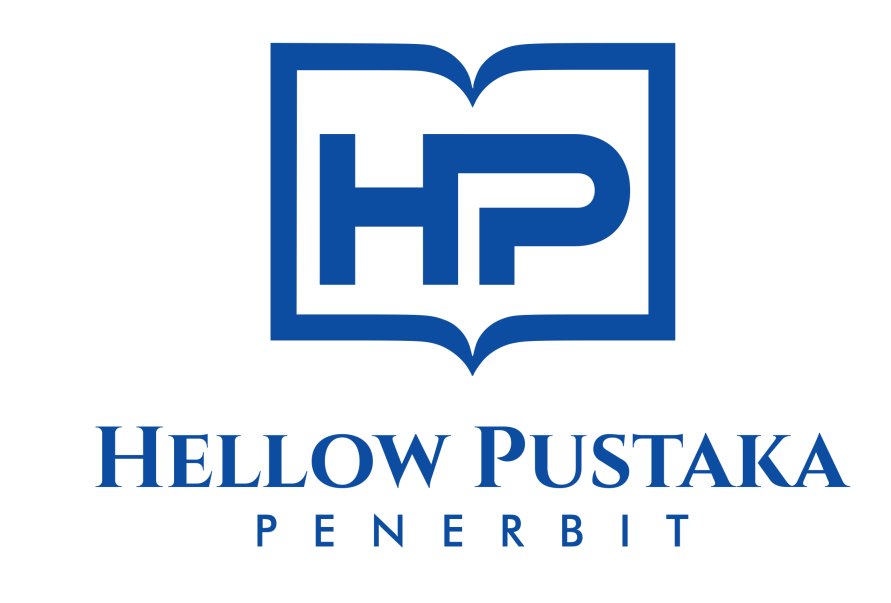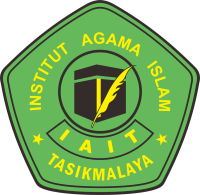Development of Learning Media Pocket Book Digital SKI Material Islamic Civilization Umayyad State in Damascus Class X Madrasah Aliyah
DOI:
https://doi.org/10.61166/kasyafa.v2i3.115Keywords:
Learning Media, Pocket Book, History of Islamic CultureAbstract
The rapid development of technology requires teachers to innovate and utilize technology to support the learning process, one of which is by utilizing digital pocket books as a learning medium, so that the learning process becomes varied and not boring. In SKI learning, teachers often use the lecture method with learning media in the form of printed books/LKS without other media, which makes students feel bored because of the monotonous learning atmosphere and the lack of innovation in the learning media used. This study aims to determine the development process and feasibility of the SKI digital pocket book learning media. This type of research is Research and Development (R&D) with the ADDIE model, including analysis, design, development, implementation and evaluation. Data collection was carried out using observation, interview, questionnaire and documentation techniques. The data analysis technique in this study is a descriptive statistical data analysis technique using a Likert scale. The results of the study showed that the SKI digital pocket book had very feasible criteria, the design aspect obtained a value of 94.9%, the readability aspect obtained a value of 94.4%, the material aspect obtained a value of 98.8% and the practicality aspect obtained a value of 95.2%. Thus, the SKI digital pocket book learning media for the material of Islamic civilization of the Umayyad Daulah in Damascus for class X MA Al Arqom Sarirejo Bojonegoro has been tested for its validity and practicality and is feasible to be used when learning.
References
Aisyah, I. H., & Rinjani, D. (2023). Pengaruh Seni Ilustrasi dalam Meningkatkan Minat Baca. INVENSI: Jurnal Penciptaan Dan Pengkajian Seni, 8(1), 1–13.
Ambarwati, D., Wibowo, U. B., Arsyiadanti, H., & Susanti, S. (2021). Studi Literatur: Peran Inovasi Pendidikan pada Pembelajaran Berbasis Teknologi Digital. Jurnal Inovasi Teknologi Pendidikan, 8(2), 173–184. https://doi.org/10.21831/jitp.v8i2.43560
Atmaja, I. W. W., & Widodo, J. P. (2022). Pengaruh Game Edukasi Berbasis Android Terhadap Hasil Belajar. Edukatif: Jurnal Ilmu Pendidikan, 4(5). https://doi.org/10.31004/edukatif.v4i5.3914
Fani, A., Yusrina, S., Asy’ari, A. Y., & Barus, I. (2024). Pengaruh Pemilihan Palet Warna Dalam E-Book Terhadap Representasi Identitas Desa Bigaran, Borobudur. SENIMAN: Jurnal Publikasi Desain Komunikasi Visual, 2(1). https://doi.org/10.59581/seniman-widyakarya.v2i.1.2167
Fernando, D. D., & Fahruddin. (2023). History Of The Industrial Revolution. Jurnal Sejarah, Pendidikan Dan Humaniora, 7(1), 94–98. https://doi.org/10.36526/js.v3i2
Jalinus, N., & Ambiyar. (2016). Media dan Sumber Pembelajaran. Kencana.
Maulidah, I. (2022). Pengembangan Bahan Ajar Berbasis Pocket Book dalam Pembelajaran IPS pada Tema Kehidupan Masyarakat Masa Islam Kelas VII di Mts Negeri 6 Banyuwangi Tahun Pelajaran 2021/2022. Universitas Islam Negeri Kiai Haji Achmad Siddiq Jember.
Mudinillah, A. (2021). Software untuk Media Pembelajaran. Bintang Pustaka Madani.
Pito, A. (2018). Media Pembelajaran Perspektif Al-Qu’an. Andragogi Jurnal Diklat Teknis, 6(2), 97–117.
Pradita, R., & Lubis, F. (2018). Kelayakan Isi Dan Bahasa Buku Ajar Bahasa Indonesia Sekolah Menengah Pertama Kelas VIII Kurikulum 2013 Edisis Revisi 2017 Penerbit Kementrian Pendidikan Dan Kebudayaan. Basastra, 7(4).
Rohman, F., Al Mufti, A. Y., Sa’diyah, M. I., & Ardiyanto, W. S. (2023). Pengembangan Buku Saku Digital Sejarah Kebudayaan Islam untuk Madrasah Tsanawiyah. Jurnal Ilmu Pendidikan, 5(1), 605–618. https://doi.org/10.31004/edukatif.v5il.4268
Saifudin, A. (2020). Penyusunan Skala Psikologi. Kencana.
Sari, W. N., & Ahmad, M. (2021). Pengembangan Media Pembelajaran Flipbook di Sekolah Dasar. Edukatif: Jurnal Ilmu Pendidikan, 3(5), 2819–1826. https://doi.org/10.31004/edukatif.v3i5.1012
Sarip, M., Amintarti, S., & Utami, N. H. (2022). Validitas dan Keterbacaan Media Ajar E-Booklet untuk Siswa SMA/MA Materi Keanekaragaman Hayati. JUPEIS: Jurnal Pendidikan Dan Ilmu Sosial, 1(1), 43–59. https://doi.org/10.21580/jid,v41.1.7847
Sugiono. (2013). Metode Penelitian Kuantitatif Kualitatif dan R&D. Alfabeta.
Sulastri, M., Serap, A., Sundaygara, C., & Ayu, H. D. (2023). Pengembangan Buku Saku Digital Berbasis Android Untuk Meningkatkan Prestasi Belajar Peserta Didik Pada Materi Usaha dan Pesawat Sederhana. Jurnal Terapan Sains Dan Teknologi, 5(3), 211–221. https://doi.org/10.21067/jtst.v5i3.9333
Supriadi, R. (2012). Media Pembelajaran Interaktif Perangkat Lunakpengolah Angka untuk Kelas XI SMA Negeri 2 Wates. Journal of Chemical Information and Modeling, 5(3). https://doi.org/10.15575/jipai.v1i1.11042
Winarni, E. W. (2018). Teori dan Praktik Penelitian Kuantitatif, Kualitatif, PTK, R&D. Bumi Aksara.
Yustiani, L., & Rahayu, V. (2018). Komunikasi Menggunakan Kalimat Bahasa Indonesia Dengan Benar. Jurnal Bahasa, Sastra Dan Pembelajarannya, 7(2). https://doi.org/10.20527/jbsp.v7i2.4428
Downloads
Published
How to Cite
Issue
Section
License
Copyright (c) 2025 Nila Abidatum Munafiatin, Alaika Abdi Muhammad, Ahmad Mustofa Lutfi

This work is licensed under a Creative Commons Attribution 4.0 International License.












